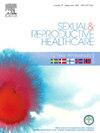Obstetric, child health outcomes, trends and readmissions for term women birthing in South-West Sydney (2001–2016): A linked data population-based study
IF 1.7
3区 医学
Q3 PUBLIC, ENVIRONMENTAL & OCCUPATIONAL HEALTH
引用次数: 0
Abstract
Objective
The aim of this study was to explore obstetric outcomes and postpartum readmissions of women and infants in an area in NSW, serving women who are from lower socio-economic and culturally diverse backgrounds.
Methods
A linked data population-based study was conducted of women living in South-West Sydney Local Health District. Registry data on women giving birth to singleton infants between 37 + 0–41 + 6 weeks gestation, between January 1st 2001-December 31st 2016, was utilised and analysed.
Results
In total data of 130 533 singleton term pregnancies were analysed with rates differing by health status as follows: healthy (11.6%), maternal diabetes (8.3%), hypertensive disease (10.1%), maternal diabetes and hypertensive disease (8.2%), psychological disorders/diseases (40.5%), or psychological diseases with either diabetes or hypertension (28.1%). When compared to women with healthy pregnancies, women with complex pregnancies were more likely to have an induction of labour, epidural anaesthesia, caesarean section, early term births and poor foetal growth, and infants had higher rates of asphyxiation and need for major resuscitation. Postnatally, women with complex pregnancies and their infants were more frequently readmitted to the hospital in the year following birth, both in the short- and longer-term. Additionally, the change in glucose cut-offs in 2014 led to a significant increase in gestational diabetes diagnosis.
Conclusion
Overall, women with complicated pregnancies in the South-West Sydney Local Health District faced significantly more adverse obstetric and child outcomes, with increased hospital readmissions within the first year postpartum.
悉尼西南部足月妇女分娩的产科、儿童健康结果、趋势和再入院(2001-2016):一项基于人群的相关数据研究
本研究的目的是探讨新南威尔士州一个地区妇女和婴儿的产科结果和产后再入院情况,这些妇女和婴儿来自较低的社会经济和文化背景。方法对生活在悉尼西南地方卫生区的妇女进行了一项基于人群的关联数据研究。利用并分析了2001年1月1日至2016年12月31日期间37 + 0-41 + 6周妊娠单胎婴儿妇女的登记数据。结果130533例单胎足月妊娠,健康(11.6%)、产妇糖尿病(8.3%)、高血压(10.1%)、产妇糖尿病合并高血压(8.2%)、心理障碍/疾病(40.5%)、糖尿病或高血压合并心理疾病(28.1%)。与健康妊娠的妇女相比,复杂妊娠的妇女更有可能引产、硬膜外麻醉、剖腹产、早产和胎儿生长不良,婴儿窒息率更高,需要进行重大复苏。产后,怀孕情况复杂的妇女及其婴儿在出生后的一年内更频繁地再次入院,无论是短期还是长期。此外,2014年葡萄糖临界值的变化导致妊娠糖尿病诊断显著增加。总的来说,悉尼西南地方卫生区的复杂妊娠妇女面临着更多的不良产科和儿童结局,产后一年内再入院率增加。
本文章由计算机程序翻译,如有差异,请以英文原文为准。
求助全文
约1分钟内获得全文
求助全文
来源期刊

Sexual & Reproductive Healthcare
PUBLIC, ENVIRONMENTAL & OCCUPATIONAL HEALTH-
CiteScore
2.70
自引率
5.60%
发文量
73
审稿时长
45 days
 求助内容:
求助内容: 应助结果提醒方式:
应助结果提醒方式:


